Timeline
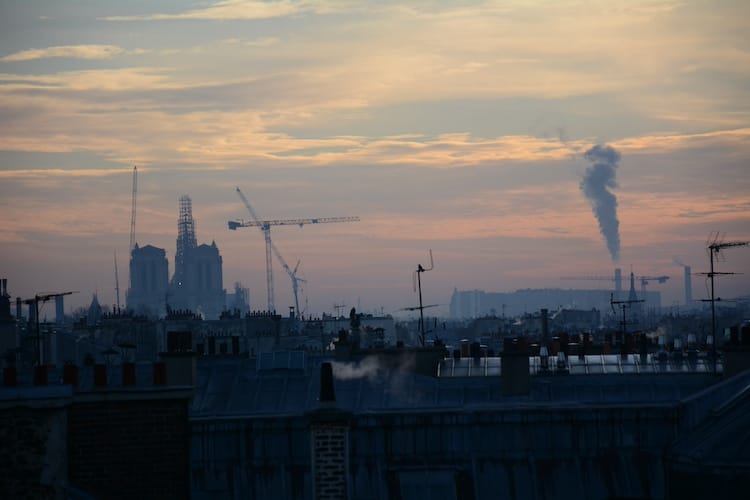
Friday, 1st March
Every morning, no matter how busy, I take a moment to scroll through Le Parisien newspaper in my inbox. A treasure trove of information about city life, it rarely disappoints and has inspired many a blog.
Wednesday I learned about an exhibition of objets trouvés, a lost and found of stuff that has been dredged out of the Seine over the millennia, at the Archaeological Crypt Museum, under the paved square in front of Notre Dame. I’d never visited the crypt and the exhibition seemed to offer a mix of mystery and history that would appeal to me.
Down the stairs and under the vast forecourt of the cathedral, you enter the very beginnings of stone-constructed Paris, unearthed in the 1960s when the city unpaved paradise to dig a parking lot.
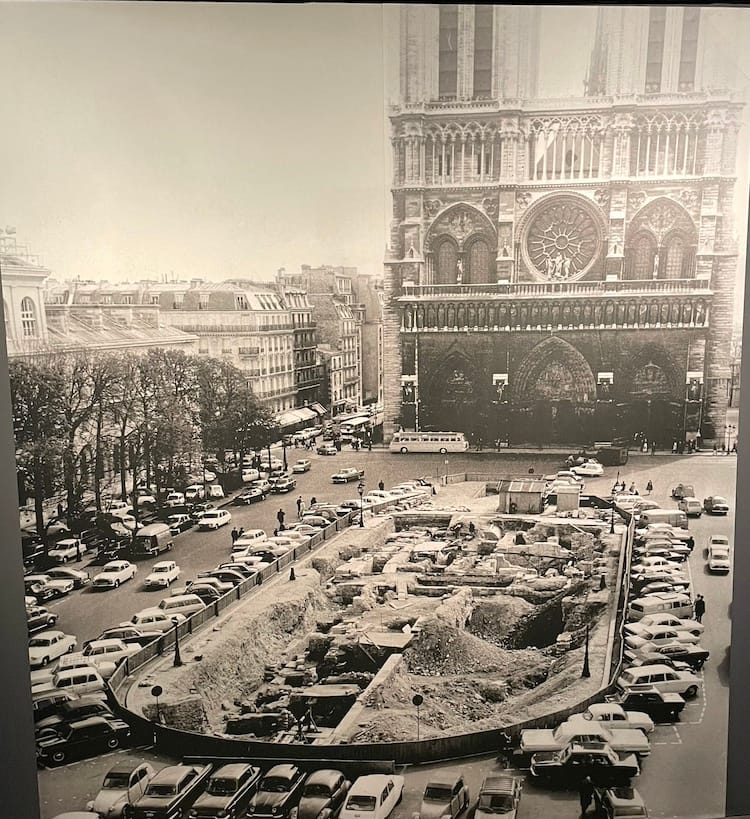
Two thousand years are crammed into a very small area.
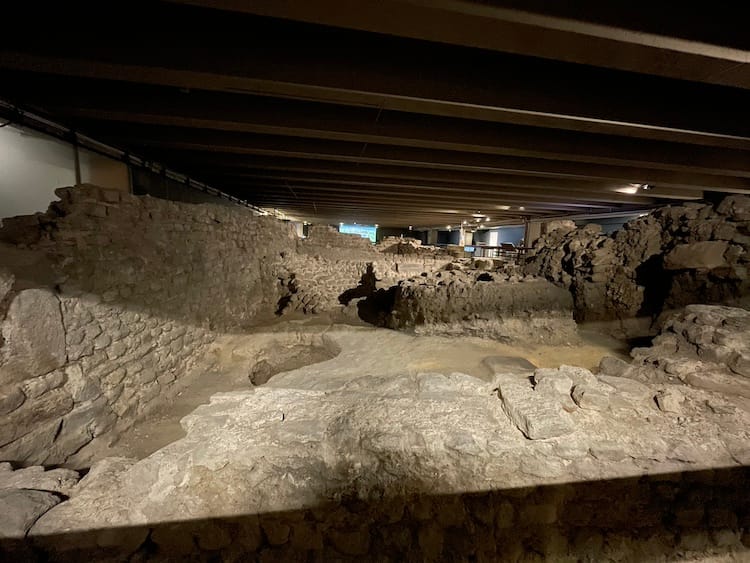
There’s a bit of the port when the city was still called Lutèce, plus traces of Gallo-Roman baths. From the 4th century are remains of the city's fortress wall, and from the Middle Ages an entrance to the first iteration of the Hôtel Dieu, the oldest Paris hospital, before it was re-built and expanded on today's ground level and where it still stands awaiting renovation today.
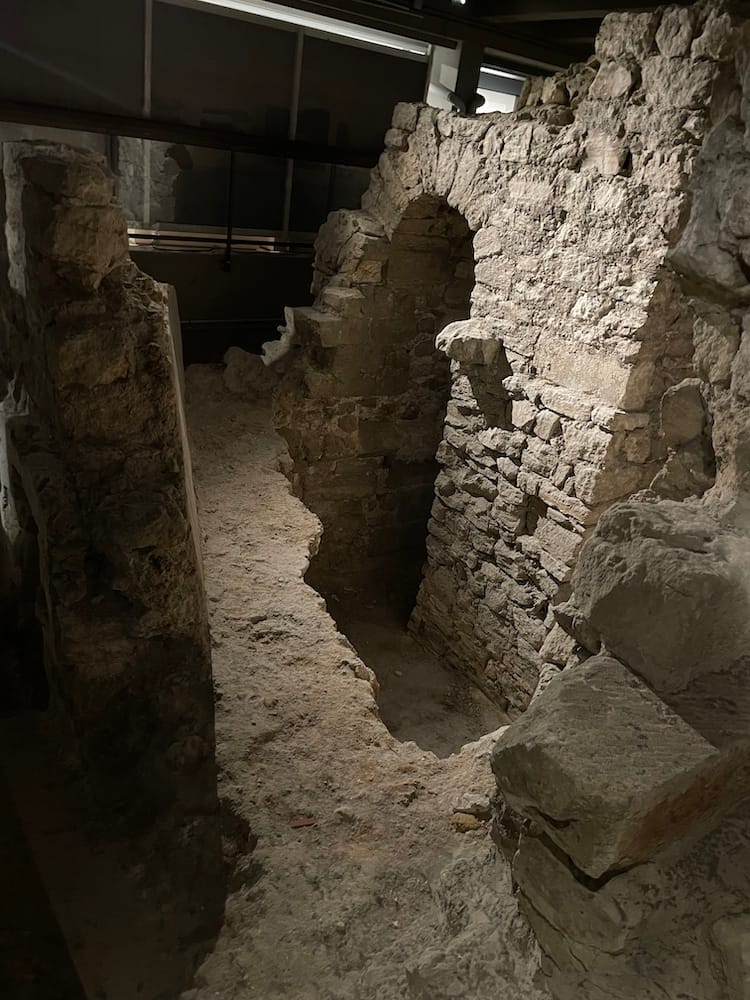
There are bits of the 18th century orphanage, the Hospice des Enfants Trouvés, as well as traces of the 19th century Haussmannien sewage system. Over the centuries, stones were recycled for reconstruction (take note, modern builders, of these ecological practices avant la lettre).
Between the penumbra and the barriers, however, you can’t see the ruins very well and only ascertain the layout from reading the information panels.
As for the objects fished out of the Seine, I liked learning that the Neanderthals had preceded us and left some of their utensils to prove it…
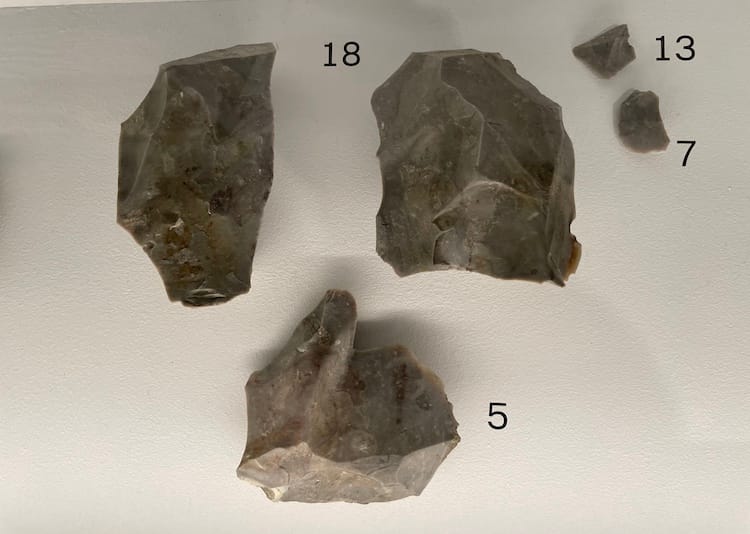
Seeing some rusted World War I helmets and swords evoked a tiny frisson, but the exhibition was timid and lazy (as the Parisien article, which I only finished upon my return because I was indeed in a hurry that morning, points out). Maybe they didn't need to display the remains of a body retrieved from the river (60 suicides a year), but where, for example, were the Vélib bicycles, the scooters and motorcycles, the bits of gating and other miscellanea of our times that I regularly see dredged out of the Seine?
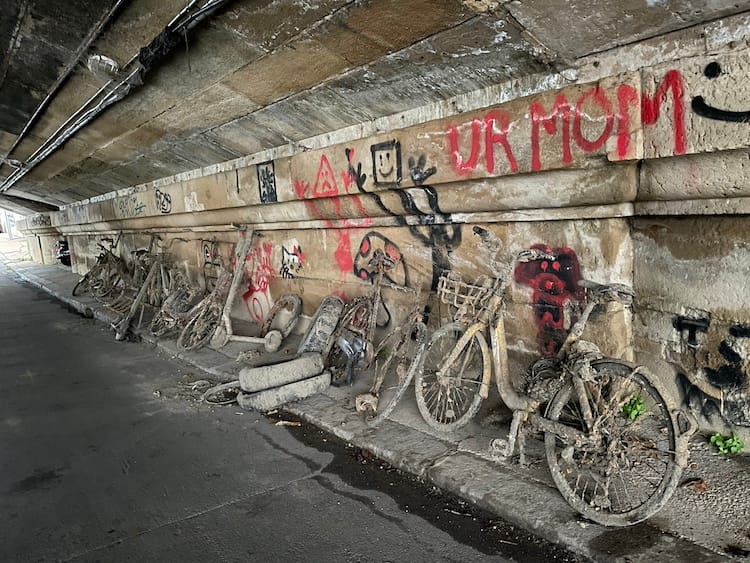
Or, along with some of the ancient coins, why wasn't there a selection of what must by now be zillions of love lock keys that have been tossed off bridges over the last decade?
Back on today's ground level, I was reminded that the main attraction here is Notre Dame, that it had been a while since I had checked up on her renovation up-close.

Certainly not since her new spire was deployed in December.
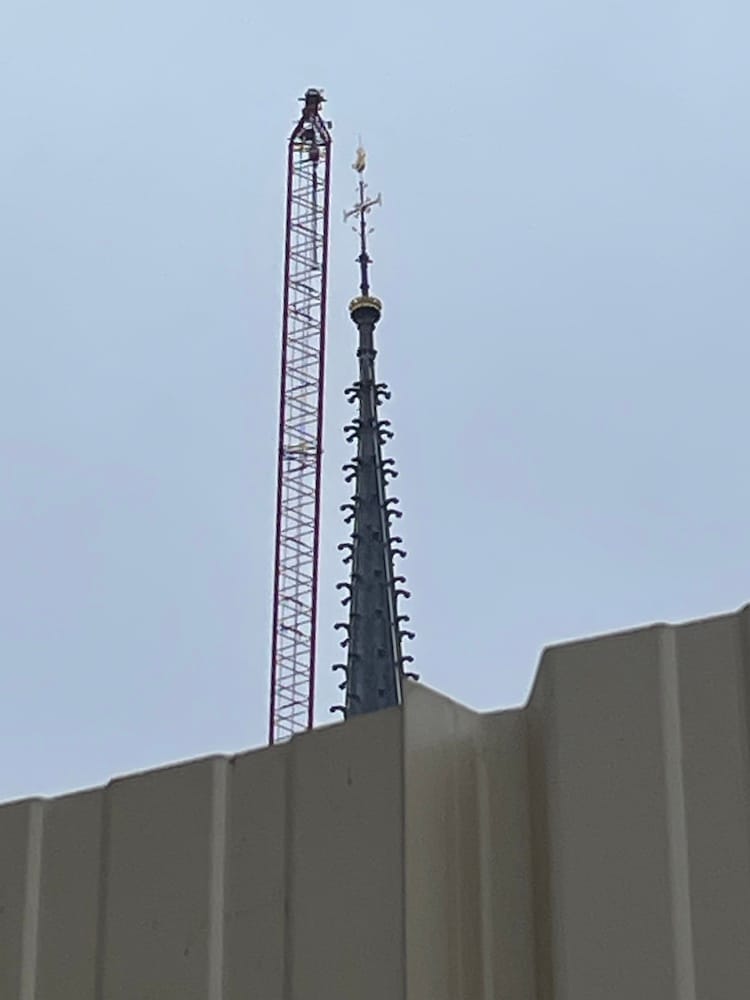
When fire struck Notre Dame on 19 April 2019, I was among the truly shaken. She is the heart of my city and the heart was broken. The other day I was moved to tears all over again. Being in her presence is not unlike standing in the shade of a majestic tree. She absorbs history the way an old oak does carbon. And like a tree, she emits a vibe, a beauty that touches an inner chord and bestows the viewer with a breath of aesthetic oxygen.
On this grey morning she seemed almost embarrassed by, apologetic for her reduced state, as if she were doing her level best to remain stoic in the midst of much fuss over her aged, wounded self.
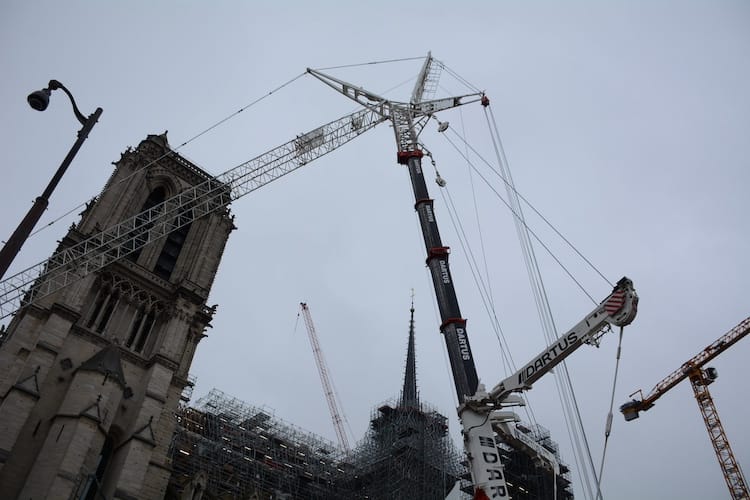
Yet the fuss touched me too. The scaffolding is a work of art.
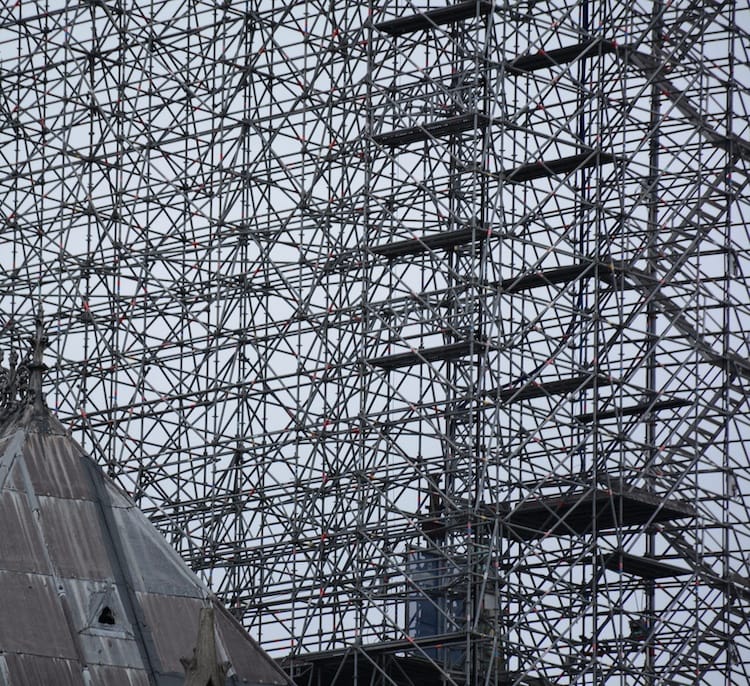
The soaring cranes state of the art engineering.
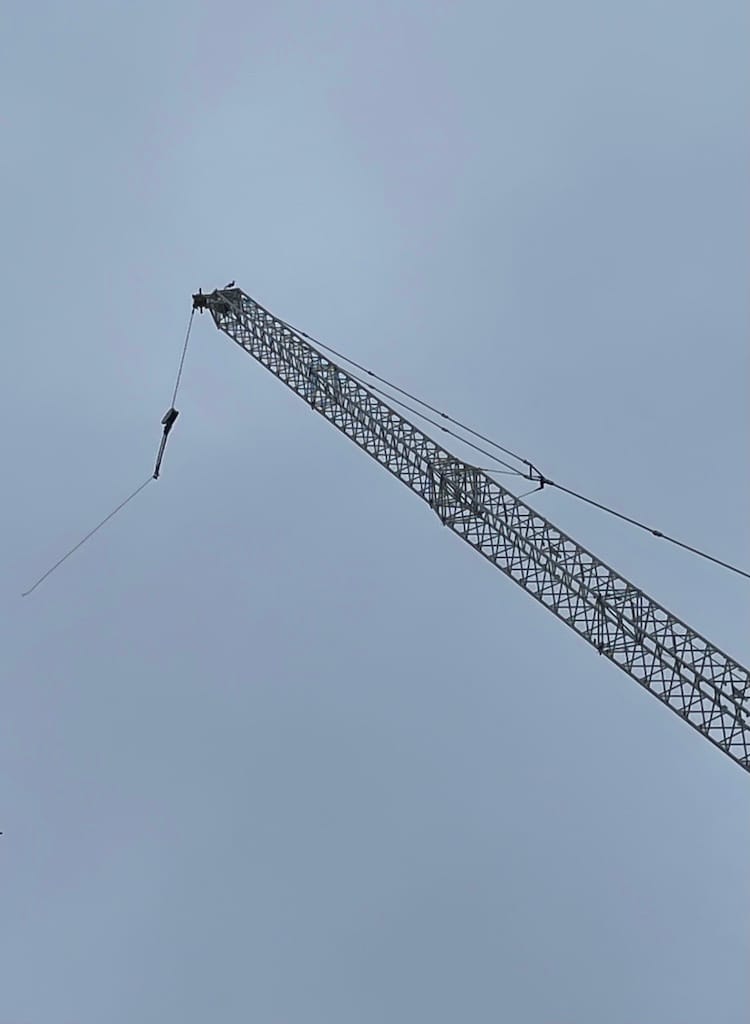
That France still has artisans highly skilled in old ways and that these masters are inside hammering and chiselling and sawing are reasons for hope.
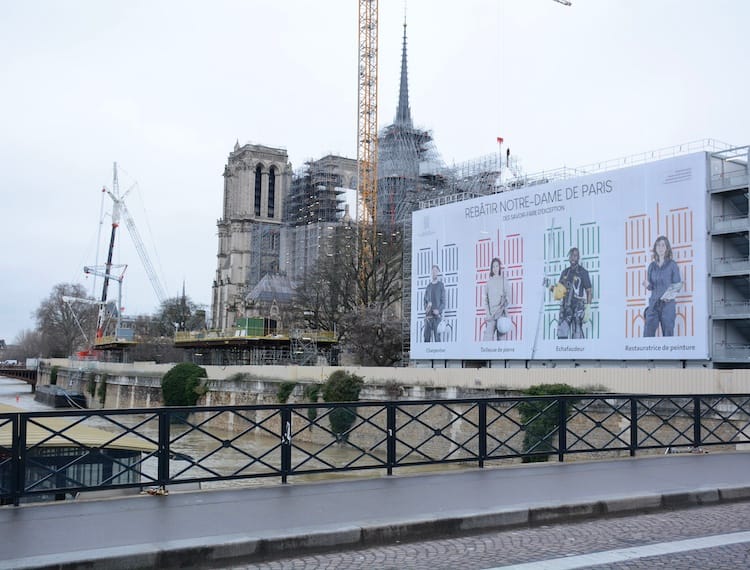
My hour's travel through Paris' past - from pre-history flints to twenty-first century mega-machines - was a reminder of how fragile our civilisations are but also how one leads to and sometimes co-exists with another. I'm not sure where to place our ailing Notre Dame on this timeline, but it was worth attending that exhibition after all.
You can visit my website here and follow me on Instagram here